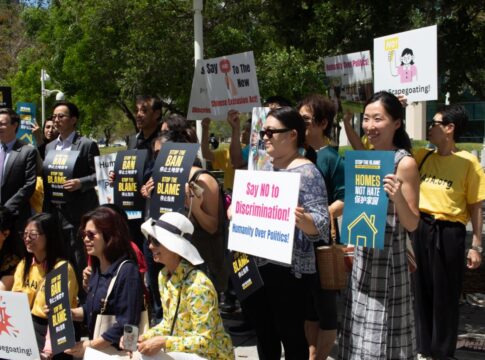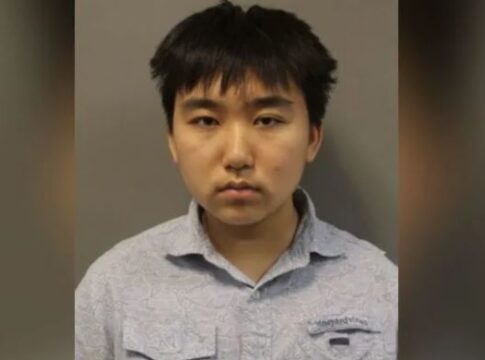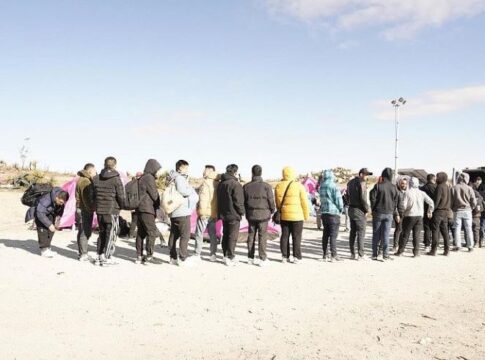By Amanda Bang, AsAmNews Intern
When Annie Chao and Daryl Han first met their foster child, they tried to not seem too excited, as that’s what the foster parent training program advised them to do. Chao prepared the boy a simple meal with Chinese white rice. The boy’s reaction surprised them.
“He just was so enamored with this simple meal,” Chao remembered.
“She brought the white rice around and the little boy just started clapping,” Han said. “He just got really excited over that bowl of rice and it’s very surprising that somebody would be so excited. So that story has resonated with us.”
Chao and Han, a couple in their forties, have now taken care of multiple foster children of different families. Some are still in their care and some have gone back to their biological parents.
LATEST STORIES
“It’s really unbelievable how quickly the kids bonded to us, because of the language, because of the food, because of the culture, because of our extended family,” Chao said.
Chao is of Chinese descent and speaks fluent Mandarin and Han has a native language of Cantonese and is learning mandarin. Chao said being of the same culture and having fluency in the children’s native language has really helped them connect to the foster children and create a more comfortable space for them.
Although many foster parents agree that cultural background is crucial in foster child care, Korean American Family Services (KFAM) based in Los Angeles reports there are too few AAPI foster families compared to the AAPI children in foster care.
According to KFAM, in LA County, there are over 600 Asian American Pacific Islander children in the foster care system. However, they estimate there are less than 100 API foster families in LA County who can serve as a culturally-appropriate match.
That is one of the reasons why KFAM’s Asian Foster Family Initiative (AFFI) program was brought into LA County. Alice Lee, a member of KFAM that helps run the AFFI program, said LA County reached out to them, reporting a need for an Asian home for foster children.
“AFFI was founded in 2014 because LA county realized they couldn’t locate a single Korean foster family home for this little boy who just lost his parents,” Lee said. “Soon, we realized it’s not just Koreans, but across the board for the API community, there is a shortage.”
Lee also emphasized the importance of having a foster family of a similar background for a better experience for the children.
“A lot of our children, especially the younger ones from preschool age, are more comfortable speaking with an Asian language than English,” Lee said. “Some of our kids come to our home and before, they had to communicate to their foster parents using Google Translator. When you have to do that, you can’t tell them your needs, your wants.”
Lee said becoming a foster parent is not an easy task. They go through a minimum of 20 hours of training and have to fill out an extensive application packet which could take from months to a year to complete.

There are a significantly lesser number of families who are willing to do foster-only care compared to foster-to-adopt, Lee said. As there are more foster-only cases for the children, this can result in a reduced number of homes the children can be considered for.
“There are a bit more of families who are interested in foster-to-adopt than foster-only,” Lee said. “We would like to have more good mix because you know, for the most part, they mostly go back home.”
Both Chao and Han spoke about how “isolated” they have been from this community and not knowing about the needs for more AAPI foster families.
“I just had this assumption. I think there’s a very wrong assumption that if something were to happen, then the extended relatives would take care of the kids,” Chao said. “That’s why it never occurred to me that there was a need because we come from a pretty healthy, extended family dynamic, where everybody would help each other.”
“I think it’s partly Confucianism,” Lee said AAPI foster parents. “It’s the idea of bringing in somebody else’s kid into your home and raising them and that’s something if you’re back home, that a lot of people are open to.”
Chao shared that the best part of being a foster parent is seeing the children blossom in the stable community they’ve provided.
“Having stability and predictability be the tone of everyday life, it allows them to not worry, not be anxious,” she said. “And then because of that, because they’ve kind of come to sort of this neutral place, then they’re really able to come and be who they really are. Whether their personality comes out or they start to achieve academically.”
“Or maybe like with the babies we’ve had, just a smile,” Han said as one of the best moments he’s had with the foster children. “They just have some of the biggest smiles.”
AsAmNews has Asian America in its heart. We’re an all-volunteer effort of dedicated staff and interns. Check out our new Instagram account. Go to our Twitter feed and Facebook page for more content. Please consider interning, joining our staff, or submitting a story, or making a contribution.









Is there any organizations for this in New York, specifically Queens? My husband and I are interested.